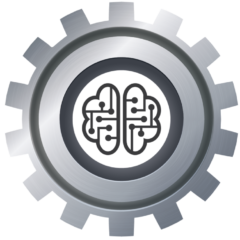In the world of project management, identifying best practices is a critical task that can lead to improved project outcomes, increased efficiency, and better overall performance. Best practices are defined as the most effective and efficient ways of accomplishing a specific task or achieving a particular goal. In this article, we will discuss the importance of identifying best practices in project management and provide some tips for doing so effectively.
Recently, my role has changed to Project Manager within Corporate FSI (Foreign Systems Interfaces) team at Universal Health Services. While I have been technically managing implementation, and new builds for our Acute facilities involving Physician Billing for the last two-three years, it’s nice to pursue this course, officially.
Why is Identifying Best Practices Important?
Identifying best practices in project management is important for several reasons. First, it allows project managers to learn from past experiences and successes. By identifying what has worked well in the past, project managers can incorporate these practices into future projects to achieve better outcomes. Second, it helps to standardize processes and procedures. When everyone on the project team is following the same best practices, it leads to greater consistency, improved quality, and reduced errors. Finally, identifying best practices can help to improve project efficiency and reduce costs. By streamlining processes and eliminating unnecessary steps, project managers can save time and money while achieving the same or better results.
How to Identify Best Practices in Project Management
Identifying best practices in project management can be a challenging task, but it is one that is well worth the effort. Here are some tips for identifying best practices effectively:
- Conduct Research: The first step in identifying best practices is to conduct research. This can involve reviewing project documentation, interviewing project team members, or conducting surveys or focus groups. By gathering information from a variety of sources, project managers can gain a better understanding of what has worked well in the past and what can be improved in the future.
- Analyze Data: Once the research has been conducted, the next step is to analyze the data. This involves looking for patterns and trends in the information gathered. Project managers should look for commonalities in successful projects and identify the factors that contributed to their success.
- Create a Best Practices Framework: Based on the data gathered and analyzed, project managers should create a framework of best practices. This framework should outline the most effective and efficient ways of accomplishing specific tasks or achieving particular goals. It should be tailored to the specific needs of the project and should be reviewed and updated regularly.
- Communicate Best Practices: Once the best practices framework has been established, it is important to communicate it to the project team. This can be done through training sessions, workshops, or other forms of communication. It is important to ensure that everyone on the project team understands the best practices and is committed to following them.
- Continuously Improve: Finally, it is important to continuously improve the best practices framework. This involves regularly reviewing and updating the framework based on feedback from the project team and lessons learned from previous projects. By continuously improving the best practices framework, project managers can ensure that it remains relevant and effective.
In Summary
Identifying best practices in project management is a critical task that can lead to improved project outcomes, increased efficiency, and better overall performance. By conducting research, analyzing data, creating a best practices framework, communicating best practices, and continuously improving the framework, project managers can ensure that their projects are successful and achieve their objectives. Identifying best practices is an ongoing process that requires dedication and commitment, but the rewards are well worth the effort.
#infobymattcole
 You can check out Matt’s LinkedIn account, Youtube Channel, or Podcast.
You can check out Matt’s LinkedIn account, Youtube Channel, or Podcast.Introducing my new books, ‘The Art of Critical Thinking’ and ‘The Critical Thinking Model’. Both can be read for free with Kindle Unlimited or $2.99 each via Kindle.
1 thought on “Identify Best Practices”
Comments are closed.